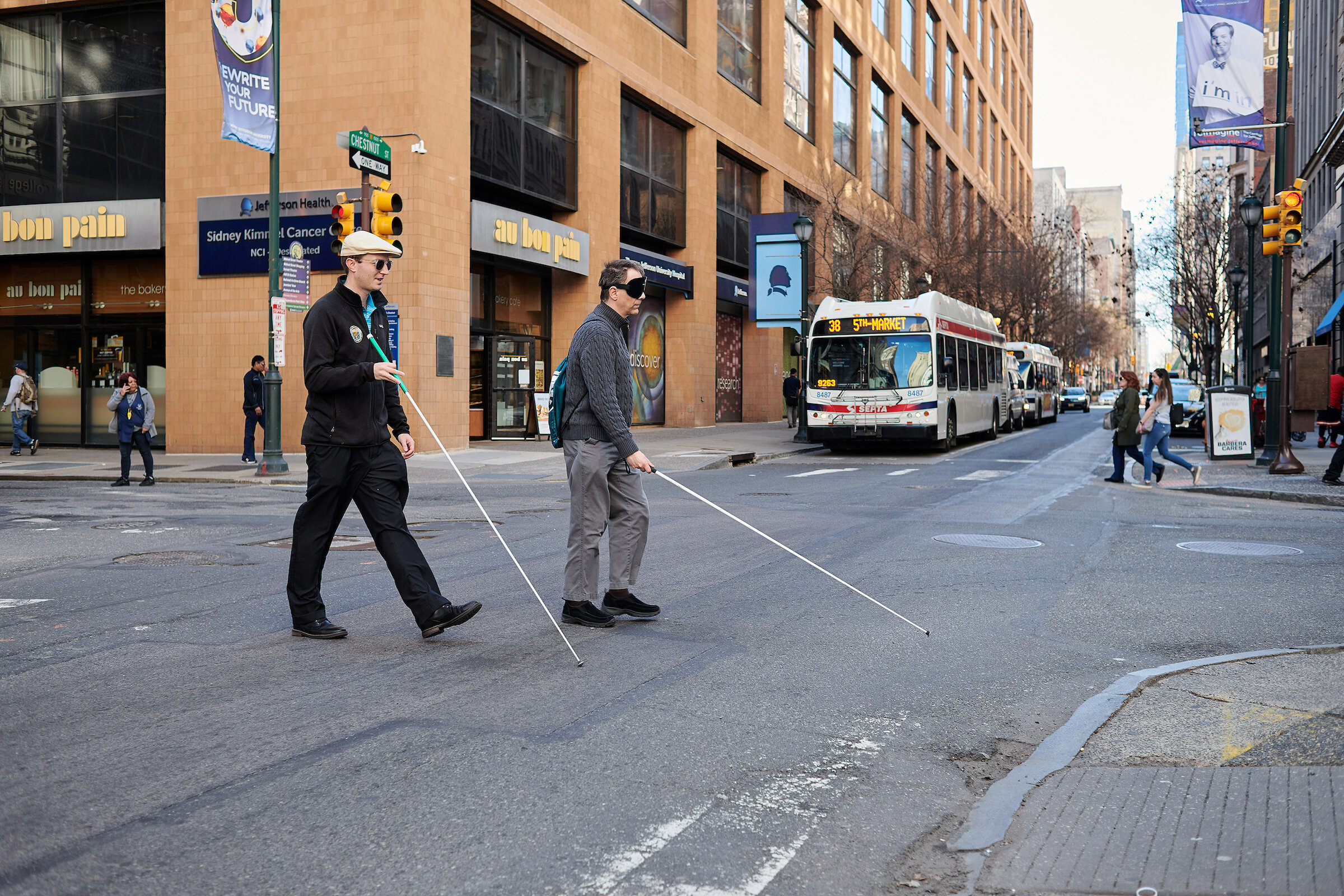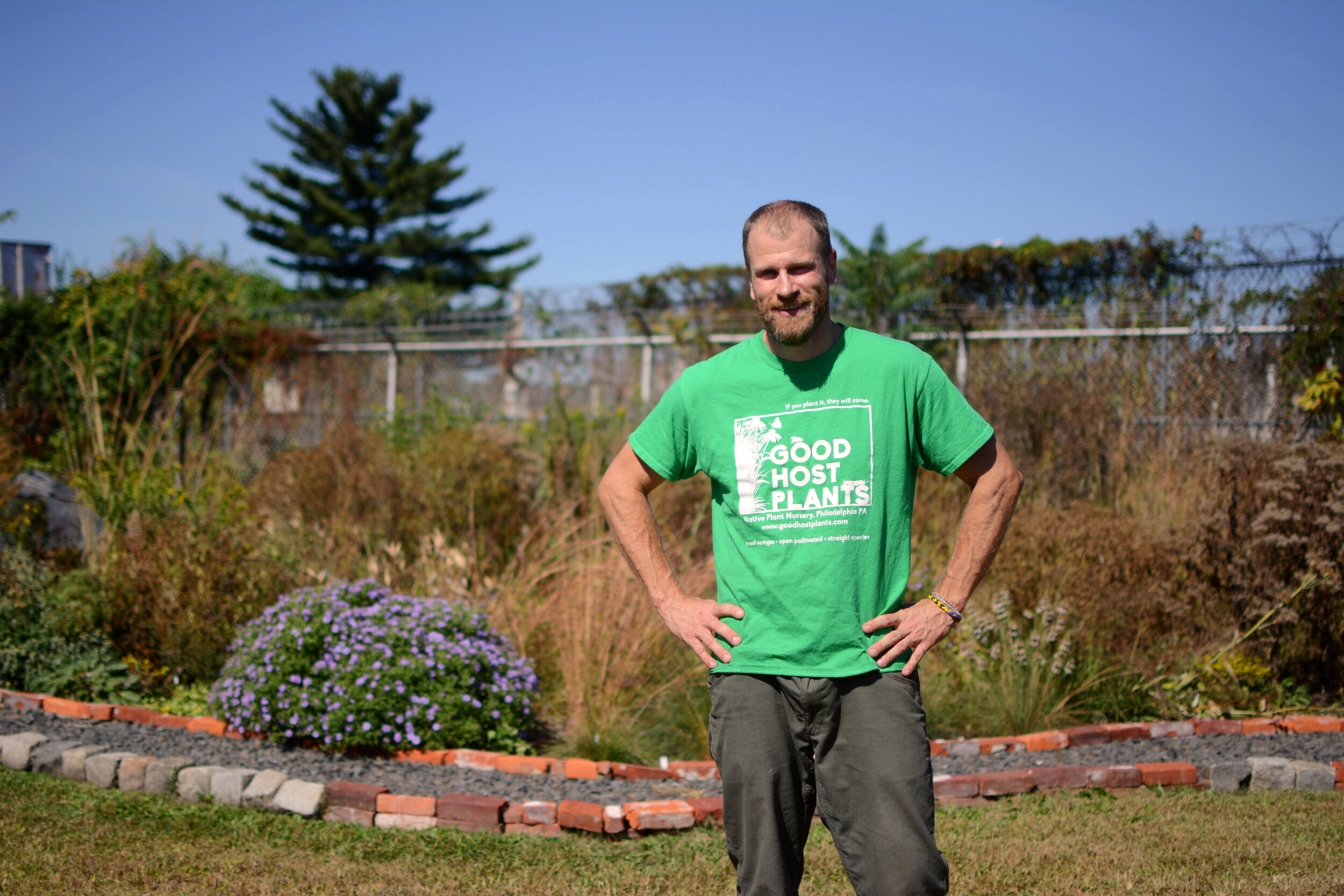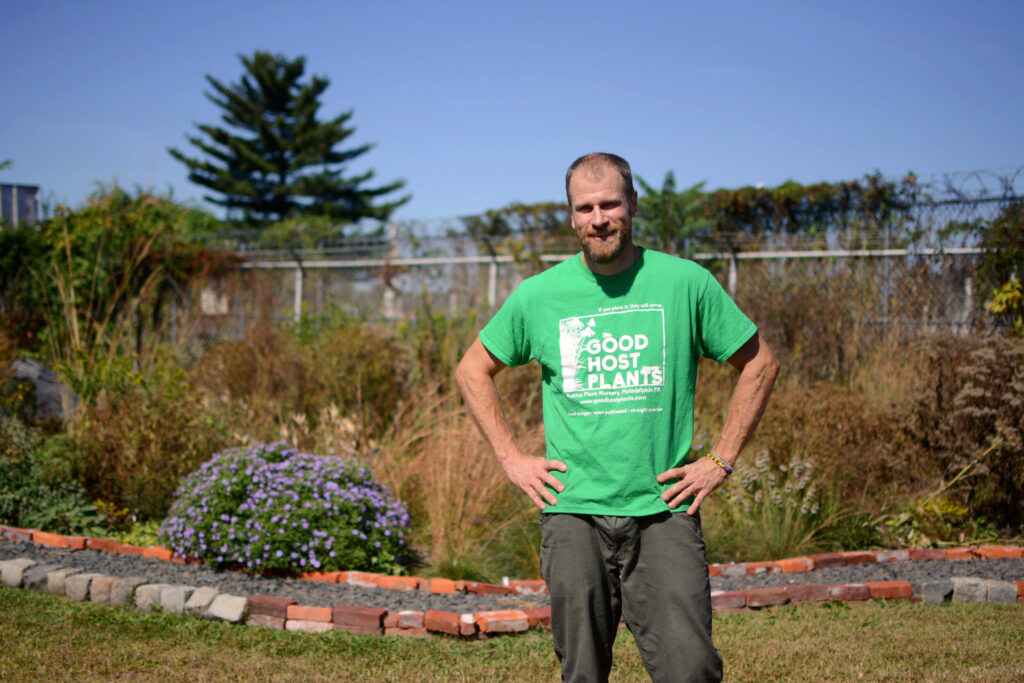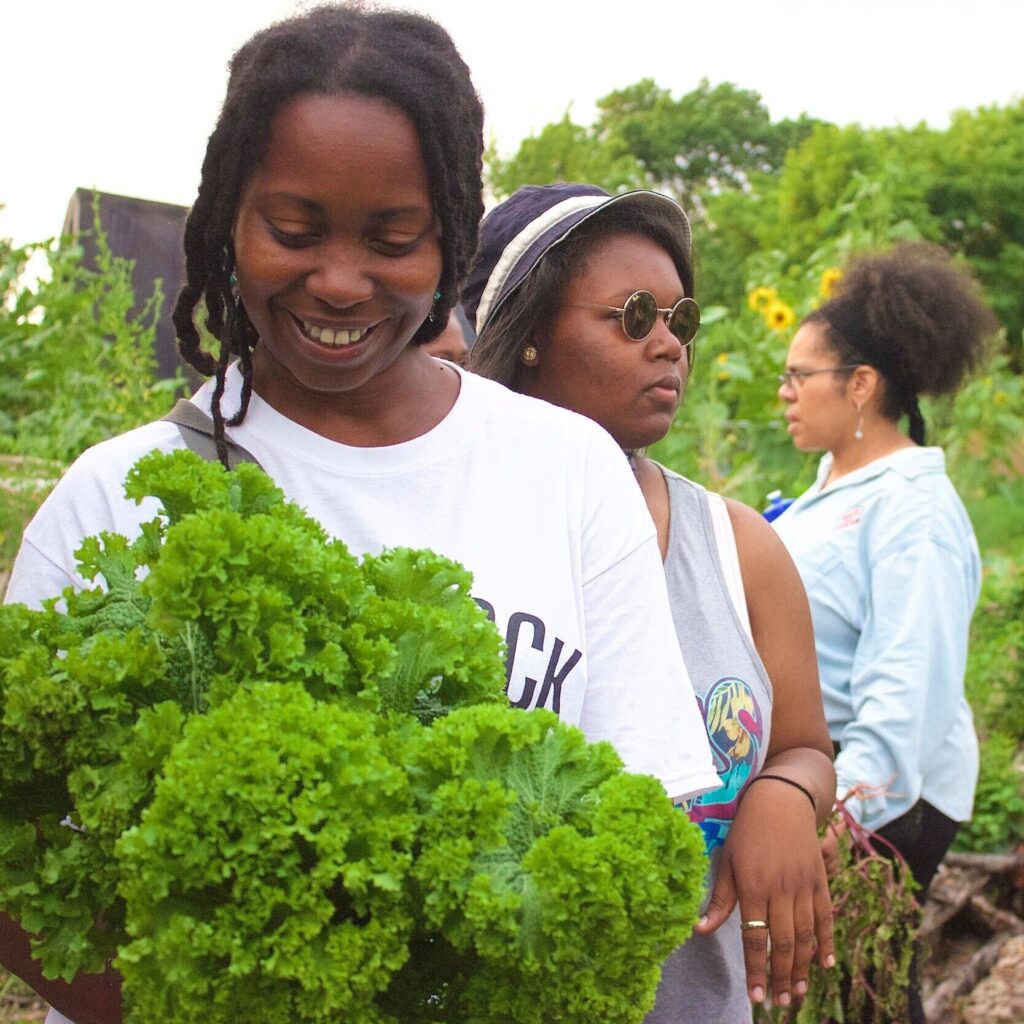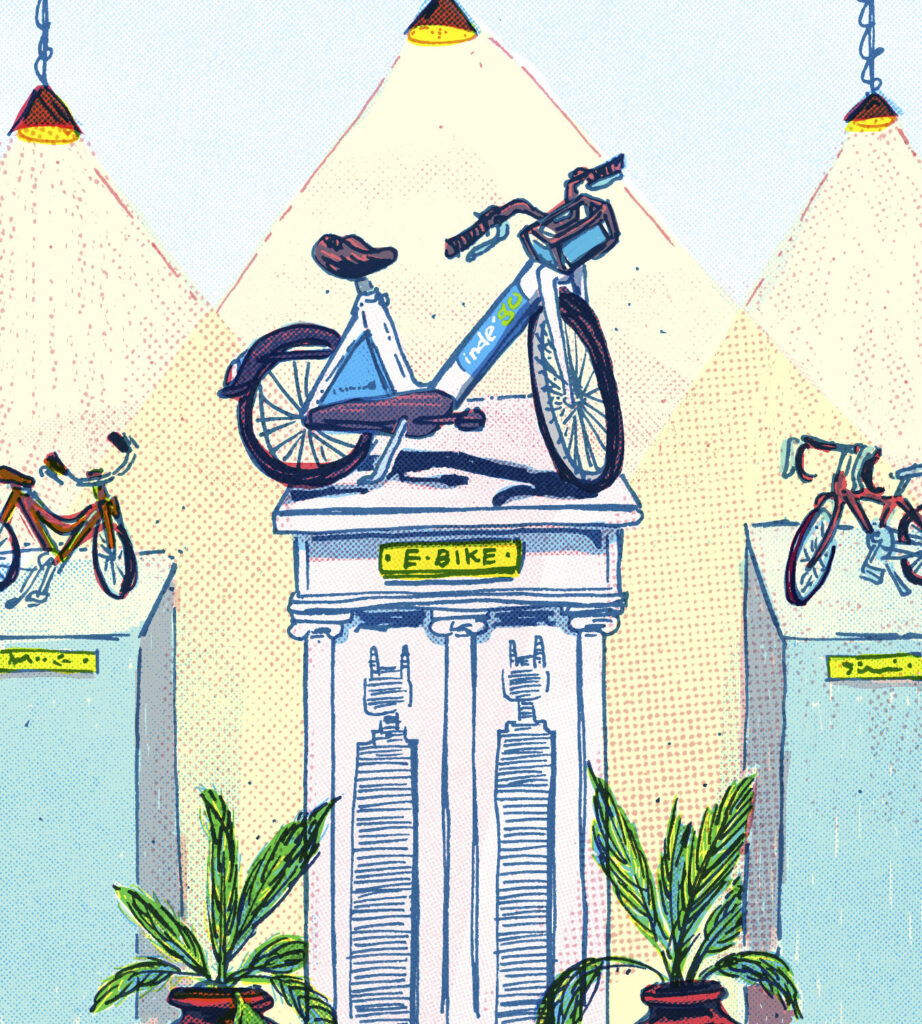Photography by Albert Yee
Street Stories & Curbside Characters: Street Smarts
By Constance Garcia-Barrio
It’s dark. High heels approach, staccato, from behind. Someone grabs your arm and propels you forward. “Let’s go!”
A kidnapping? More likely, the theft of a moment’s independence from a blind person on Philly’s streets. “Once, a woman took my arm and led me across the wrong street,” says Lynn Heitz, 60, director of education enrichment programming at Associated Services for the Blind and Visually Impaired (ASB), a nonprofit organization that provides services for persons with low vision or blindness. “She had good intentions, but it’s a frightening experience for someone who’s blind.”
Chris Danielsen, 49, a spokesperson for the National Federation of the Blind (NFB), headquartered in Baltimore, Maryland, made another point about such encounters. “Taking my arm without my permission would be unacceptable under any other circumstances,” he says.
Heitz, ASB cane travel instructor Justin Salisbury and his student David Stassen have insights into the challenges blind people face on the street. “I went blind in high school due to complications from a head injury,” says Salisbury, 30, who has some residual vision. “During high school and college, I was told to avoid blindness techniques like using a cane if I could get by without them.” For instance, Salisbury read large print instead of braille.
Heitz explains that only a small group of blind people see nothing at all. “I have no vision in my right eye, a small amount of peripheral vision in my left, but no depth perception,” says Heitz, who has three grown children and a master’s degree in social work from the University of Pennsylvania.
Salisbury may have been advised to rely on his remaining sight in order to avoid the stigma blind people face. “At one time, schools for the blind were in isolated areas,” he says, “so blind students didn’t experience an urban setting and sighted people didn’t have to interact with them. It’s different now.” Soon after going blind, Salisbury’s dreams for himself seemed to shrink. “I was always athletic, so I still went out for track, but I didn’t push myself academically,” he says. “I took easy classes.”
Photography by Albert Yee
Salisbury threw out those cushy choices after attending the 2008 award banquet where he received a college scholarship from the National Federation of the Blind of Connecticut. “I met a blind civil engineer and a blind chemist with a Ph.D. that night,” he says. “It changed my life.” In time, Salisbury had another revelation. “I realized that some people with no vision were operating better than I was,” he says. “They read faster with braille and walked more confidently with a cane.”
Salisbury came to employ those methods by attending a training center accredited by the National Blindness Professional Certification Board. “Now the only time I don’t have a cane is on the treadmill,” says Salisbury, who has a master’s degree in counseling and guidance with a concentration in rehabilitation teaching for the blind from Louisiana Tech University.
With ASB, Salisbury has taught skills ranging from how to manage a home to how to ace a job interview, and he’s written on topics like empowering blind students and flirting and dating. However, his background emphasizes teaching cane travel. “At the Louisiana Tech Center for the Blind, we attended Mardi Gras not for fun but to learn,” he says. “Navigating in crowds is tough. If you can manage Mardi Gras, you can do anything.”
Street travel, the heart of independence, presents a challenge for blind people. “If you’re learning to read braille and you make an error, the stakes aren’t as high as when you make a misstep at a busy intersection,” Salisbury says. “Cane travel’s the scariest class,” agrees Stassen, 52, born visually impaired because his mother contracted rubella during pregnancy. “It takes several weeks to build confidence indoors before we work with our canes on the street,” he says. Previously, Stassen relied on his residual sight when walking. “Outside, it’s still hard to find corners because I’m just learning to feel when my cane drops off the curb. But I’ll get it.”
Blind people need training for street travel, but it would help if sighted people had savvy in relating to them. “When in doubt about whether a blind pedestrian needs help, say ‘Hi!’ ” Salisbury says. “That opener gives blind people a chance to ask for assistance if they need it.” Consider the role stigma may play on the street, urges Danielsen. “Most sighted people believe that blind people can’t travel independently,” he says. “To a sighted person, it may seem that I’ve stood on the corner a long time, but I’m listening to traffic patterns. We can’t see how much time is left on the light before the traffic will flow against us, so I may want to go through a whole traffic cycle to ensure I have time to cross.”
Public transit also has ins and outs. “I talked with lots of blind people here before I moved to Philly,” says Salisbury, who arrived here from Honolulu in December. “I live in University City and use the El. Walking on a train platform poses no problem because if the cane drops off the edge, you stop walking or turn.”
Guide dogs give blind people another travel choice, Danielsen notes. “Some blind people say guide-dog travel is more seamless because the dog helps the person avoid obstacles,” Danielsen says. “It can detect things like low-hanging branches. On the other hand, a dog is a living being that needs care, and the dog may not be available sometimes. Maybe it might have to go to the vet. So it’s good to have cane travel skills in any case.”
Activism to help ensure full lives for blind people—for example, fair wages—keeps Salisbury moving, despite the obstacles. Meanwhile, successes buoy him. “One of my former students, a blind nurse, traveled solo to Europe for a nursing conference where she was a presenter,” he says. “We can do anything.”


